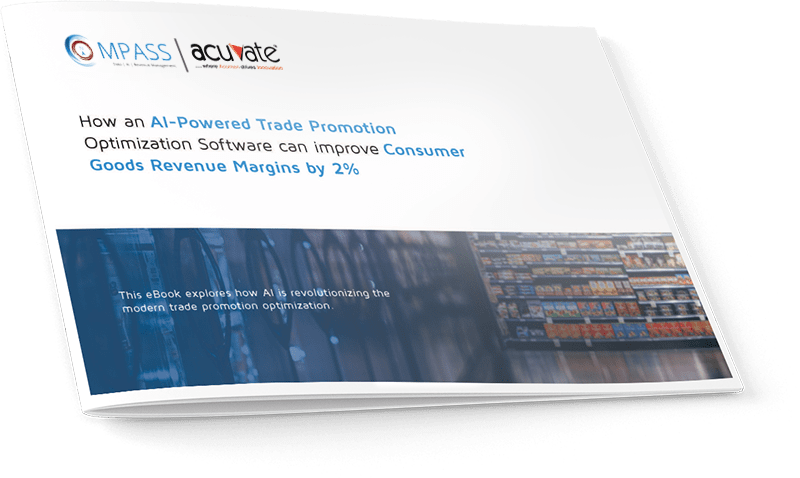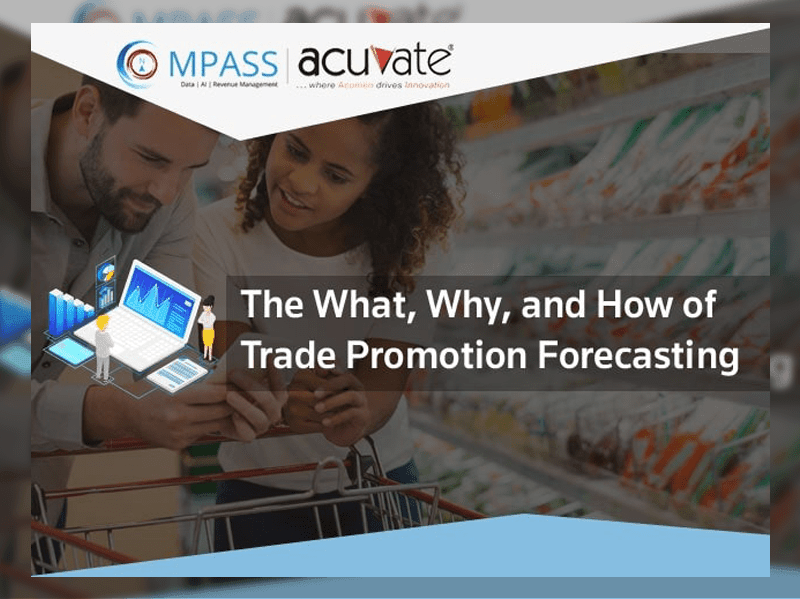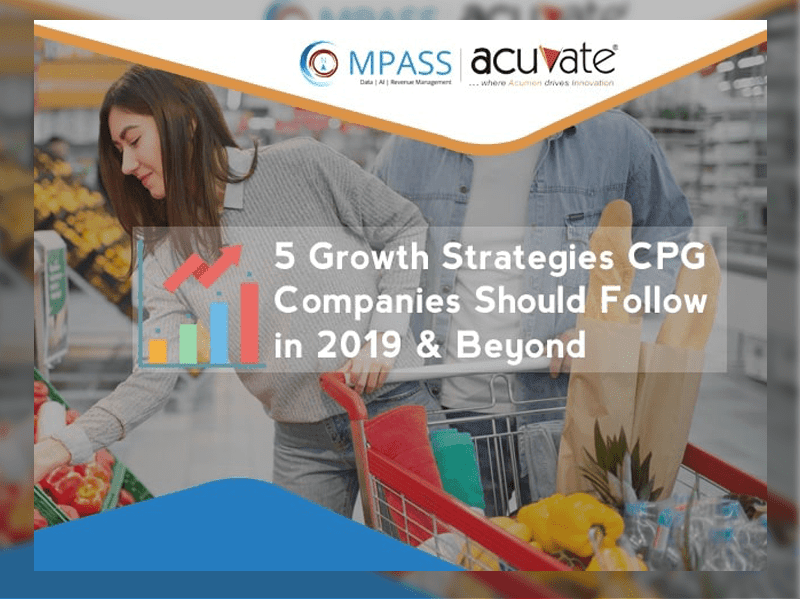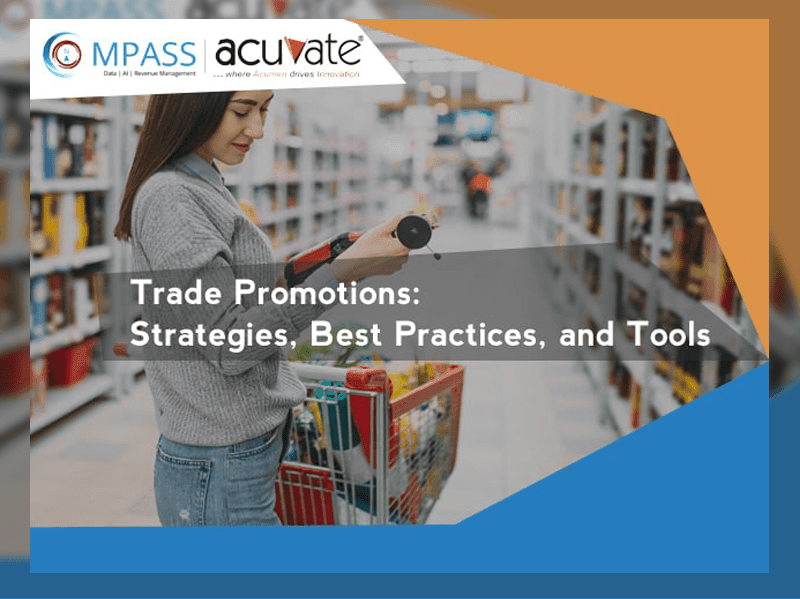Trade Promotions are a crucial part of the consumer packaged goods (CPG) industry. They are highly instrumental in driving sales, creating brand visibility, awareness and loyalty.
Trade Promotion Forecasting (TPF) refers to the process that seeks to draw and explore the multitude of correlations between trade promotion elements and historical demand, in order to arrive at the precise demand forecasting for future campaigns. This is a key component in deriving the best possible return on investment done on marketing and trade promotional activities. An effective TPF solution offers the capability to forecast the sales uplift and ROI that can be generated due to a particular trade promotion. This aspect is crucial to help model future promotions.
Trade Promotion Forecasting Challenges
Analysing and forecasting the impact or uplift of promotions are becoming increasingly complicated. Trade Promotion Forecasting can be a burdensome task as there are several variables involved, siloed and large datasets which may include a lot of unstructured data as well.
Navigating these challenges calls for newer, more advanced tools and approaches. As per a Gartner Report, about 59% of the companies rely on basic spreadsheets for forecasting and analysis of trade promotions. Some of the other constraints faced while using spreadsheets for trade promotion planning and forecasting, include – lack of complete visibility, flexibility and difficulty in analyzing data, among others.
A large majority of the companies are still dependent on Legacy Systems, Sales and Operations Planning (S&OP) applications, integrated Enterprise Resource Planning (ERP) and homegrown trade promotion solutions. Most of these systems do assist in the process of planning, however, primarily there is a reliance on human gut when it comes to forecasting.
Another issue specifically with legacy systems is that they contribute to internal fragmentation of trade marketing data. Most companies using these tools typically produce assumption-based forecasts with low accuracy.
The Need for Trade Promotion Forecasting Tools
Fortunately, there are several trade promotion forecasting and optimisation tools available that can help your organisation make the most of your marketing spend. Companies like Danone leveraged machine learning enabled trade promotion forecasting tools and witnessed a reduction of 30% in lost sales. Machine learning offers the added boost to enhance the accuracy of forecasting.
An additional benefit that machine learning offers is it improves the forecasting ability of these tools over time. Which is to say that the tool becomes smarter as it gains new insights from a growing trove of promotion data.
Features to Look for in a Trade Promotion Forecasting System
1. Usability
While a system definitely needs to be highly advanced and powerful, it should still be easily usable and navigable for business users and should not require a high level of technical knowledge to operate. This way, the managers can focus on their core job rather than struggle with complex systems. Integrating chatbots into these systems usually improves usability and drives adoption.
Learn more: Business Intelligence Chatbots
2. Sales Prediction

Are Your Trade Promotions Generating the Desired ROI?
Check Out Compass: An AI-Powered Trade Promotion Optimization Solution
3. Big Data Integration
Being able to navigate, correlate and analyse vast troves of raw data in various formats should be a key feature of the tool. Especially with a large amount of critical data generated every day, the system’s ability to work with Big Data should be scalable. Enough to accommodate the current and future needs as the data sets expand. The solution should be able to integrate and harmonize data from multiple internal and external data sources which can influence the promotional outcome. These sources can include online data from social channels, weather (Learn more: weather data analytics), seasonal events, past promotion data, POS etc.
Data integration should be automated, and rapid so managers can form decisions based on the latest market insights and forecasted demand.
4. Recommendations

A powerful TPF system should provide recommendations on the right promotions to be run and the sales forecast for the same.
5. What-if analysis
You should be able to build what-if scenarios and forecast sales for different promotion combination of your choice. While building what-if scenarios, you should have the flexibility to set constraints like budget, time, type of promotion etc. and objective-based parameters like maximizing revenue, or margins or profitability.
By leveraging these forecasting tools and strategies, companies are sure to run successful trade promotion campaigns and derive the best results out of their trade promotions. Acuvate’s Compass, a trade promotion optimization software also offers highly accurate and advanced Trade Promotion Forecasting. The tool is powered with Artificial Intelligence and Machine Learning capabilities to help you predict future sales and plan promotion strategies accordingly. The solution converts structured and unstructured big data into actionable insights and recommendations and empowers revenue managers to make data-driven decisions.

Free Ebook
How an AI-Powered Trade Promotion Optimization Software Can Improve Consumer Goods Revenue Margins by 2%



